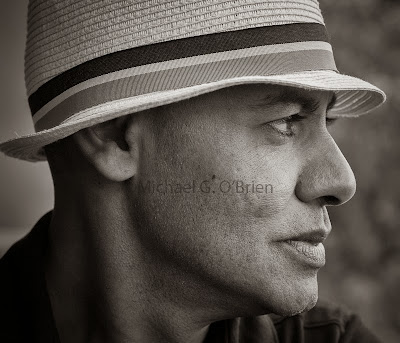 |
| VEILED WOMAN |
We started shooting in digital with a Canon 5D II, 85mm - f1.8 combo; this allowed a relaxed pace to develop with minimal hassle. Then I switched to Kodak film loaded in a Hasselblad with a Zeiss 150mm lens - a lens that I love for it's softness. Of course the cameras were tripod mounted.
The way to create the setting or mood for this type of portrait is to keep it real; be respectful of the subject's requests at all times....really listen and be attentive to the body language as it unfolds during the session; for instance move the camera closer to create more intimacy but watch closely for nervous fidgeting, shielding movements etc. If the person is clearly uncomfortable, then back off no matter what they say. Many people, just to be polite, will say they are comfortable when you ask them, even though they clearly are not. I keep talking while shooting....but not superficial chatter - I ask questions, probe, build on the rapport and trust established during our previous meetings. Trust is the key. Respect is the volition. Hiding behind the camera creates a barrier so I try my best to open to the other person in a real way, to give something of myself so it is an exchange rather than a one way street with me in control. If this isn't received well then I just listen and move the session along with a question here and there.
About my workflow: I develop any film myself, then scan it with an Imacon scanner and upload the file into Lightroom.....from there we open it in Photoshop and an action for portraits is applied. Sometimes the next step is to use Silver Efex for B&W conversion. NIK Silver Efex helps me achieve the feel and technical excellence that I want in my work. Then we bring the PS image back into Lightroom to use the 'yellow filter' preset - this gives me the emulsion colour I'm looking for. Similarly, I do all my own post processing of the digital files from the shoot.









